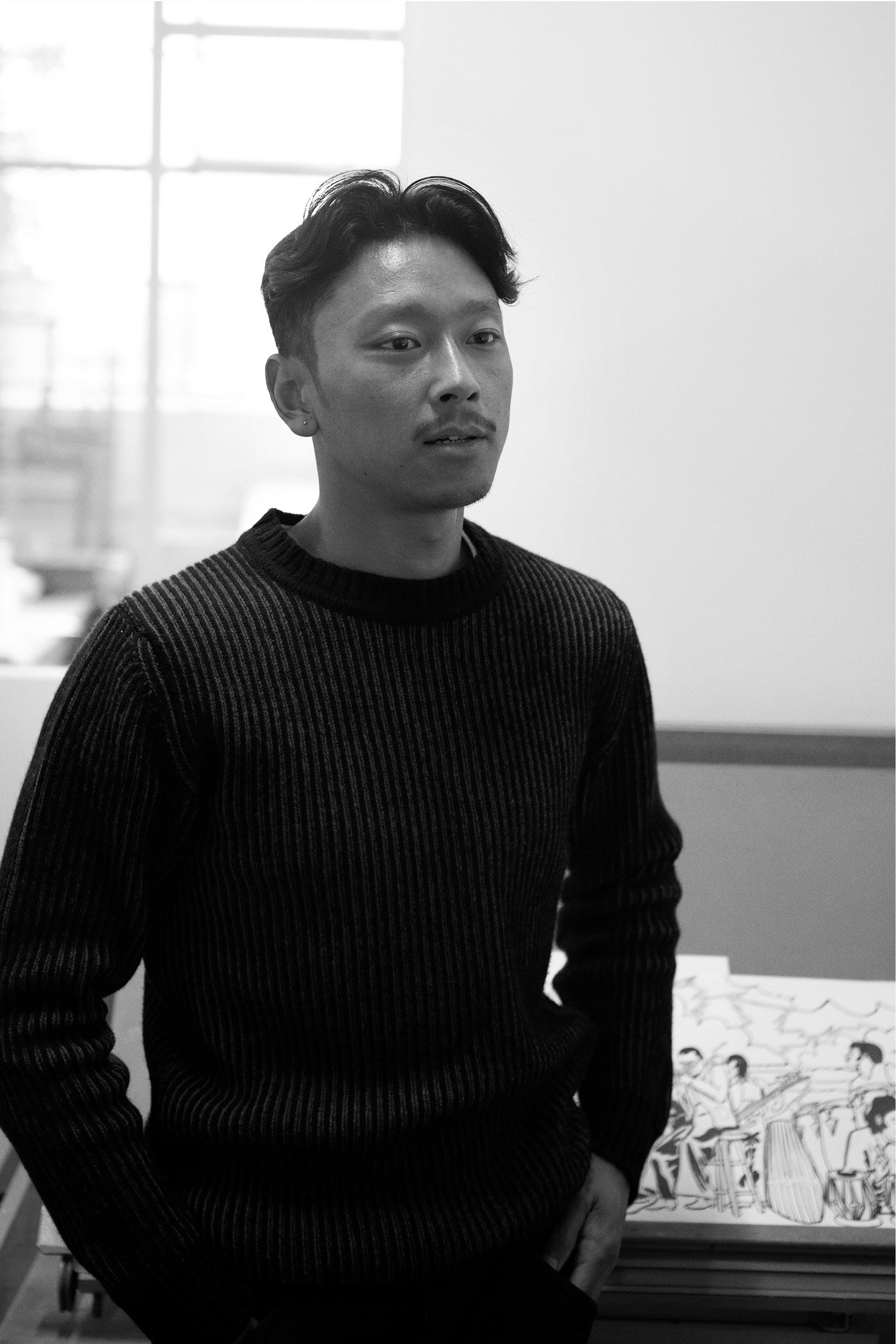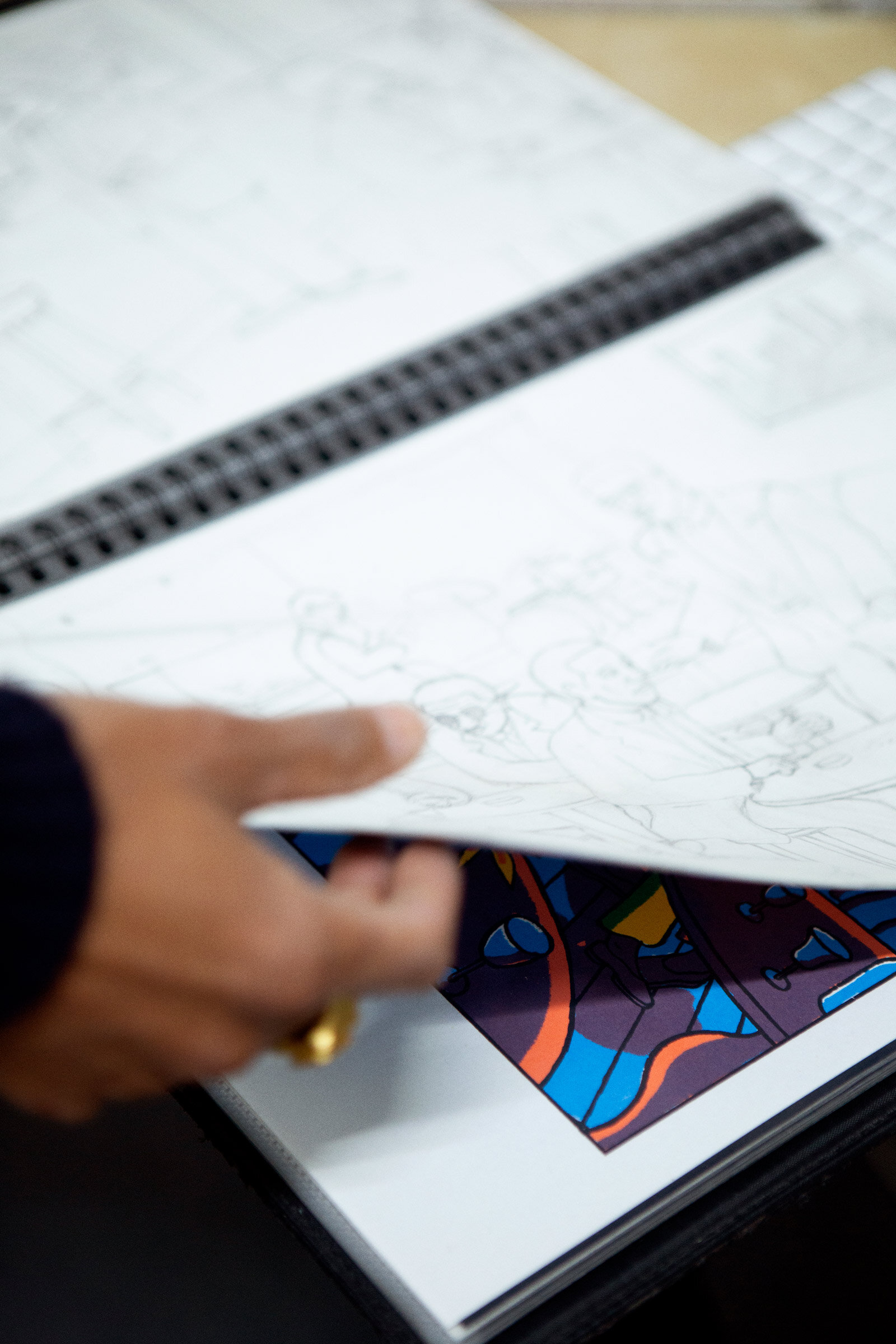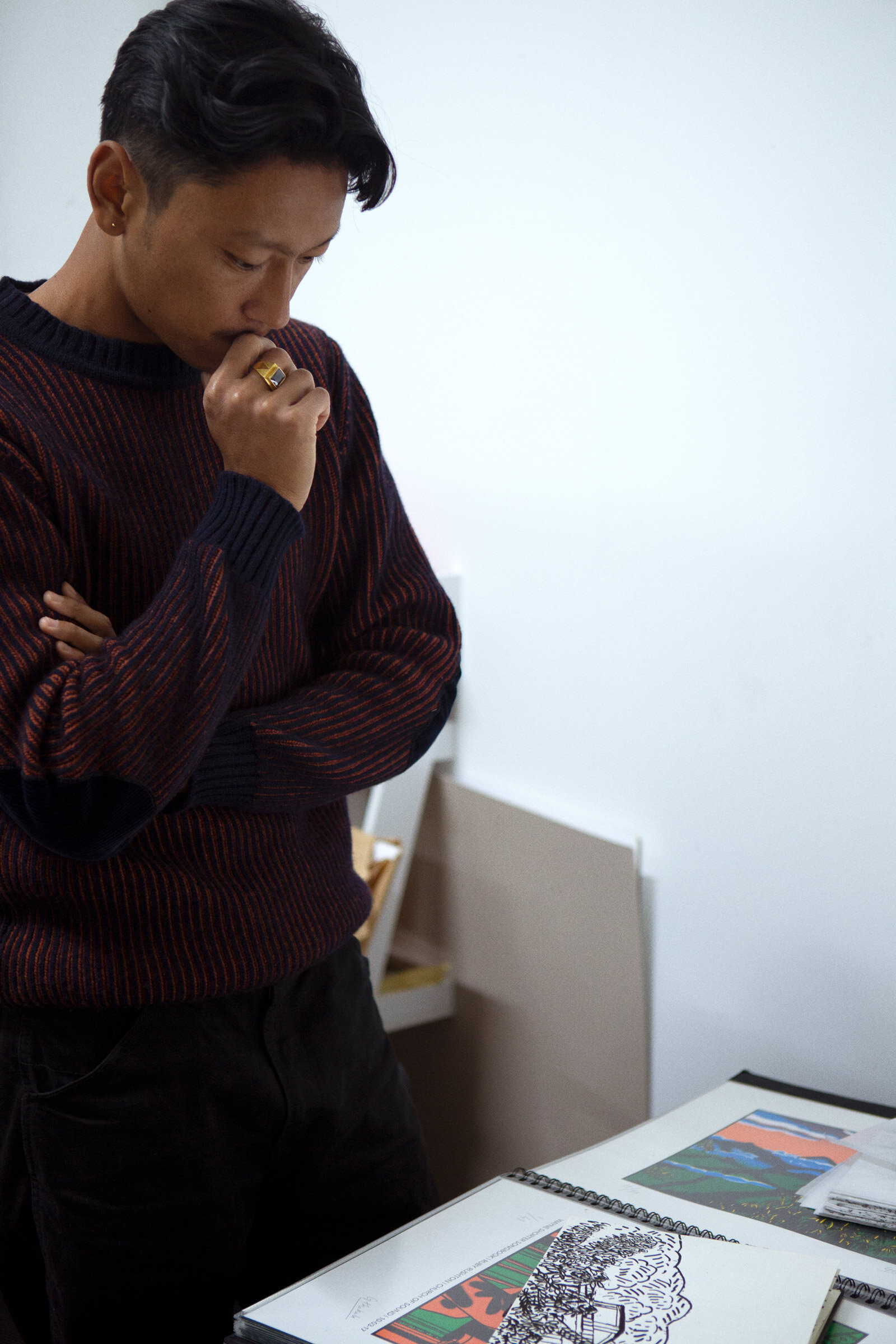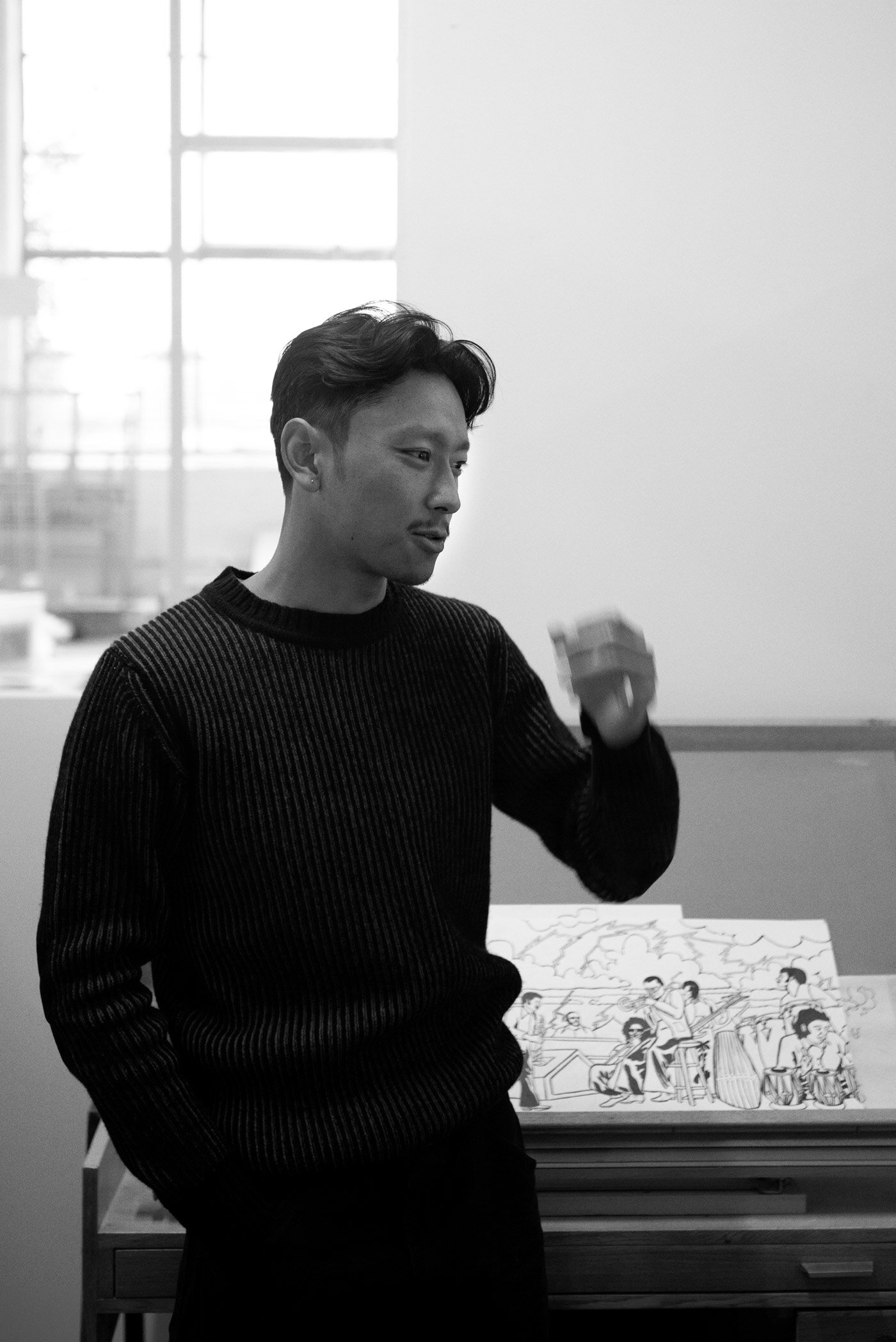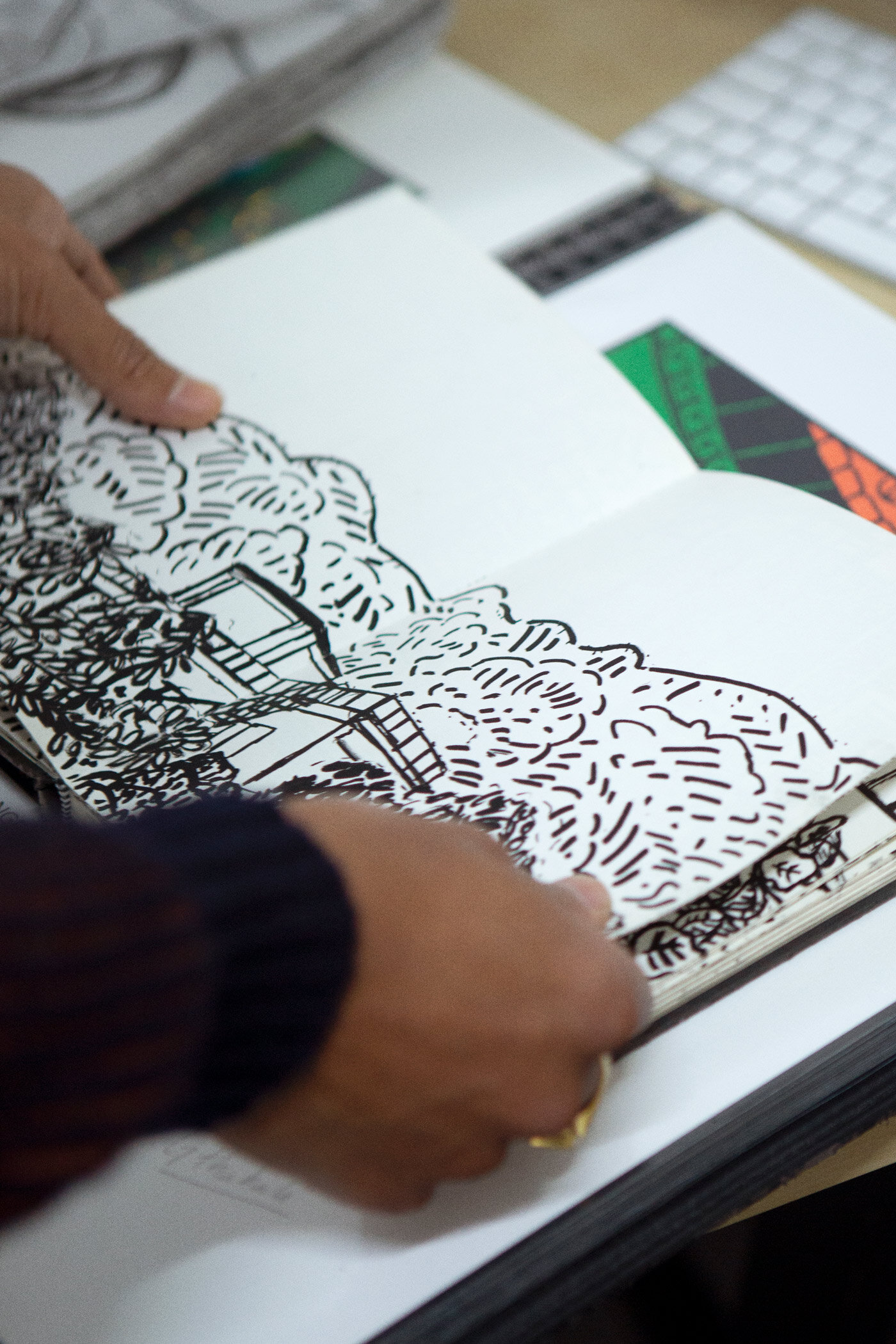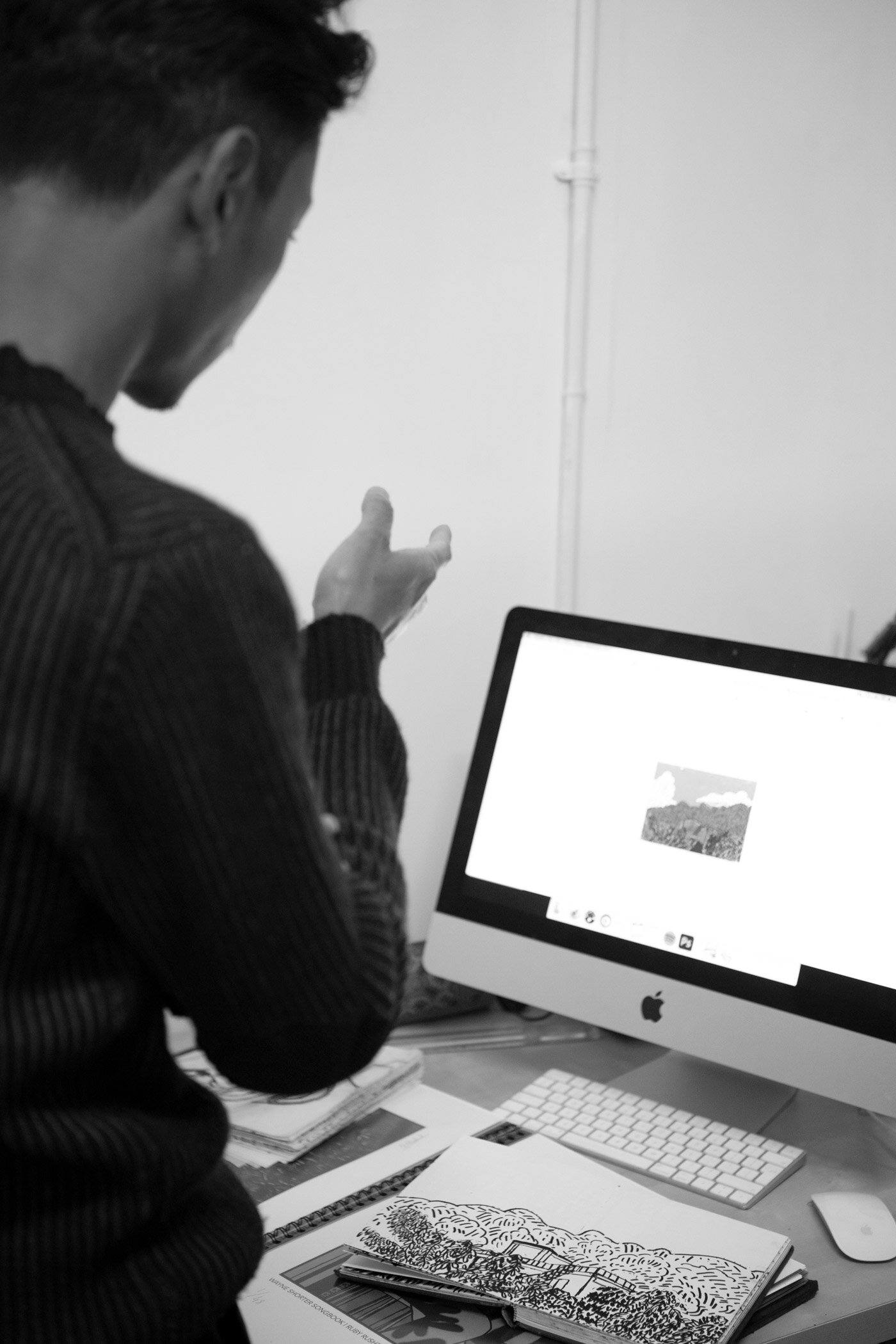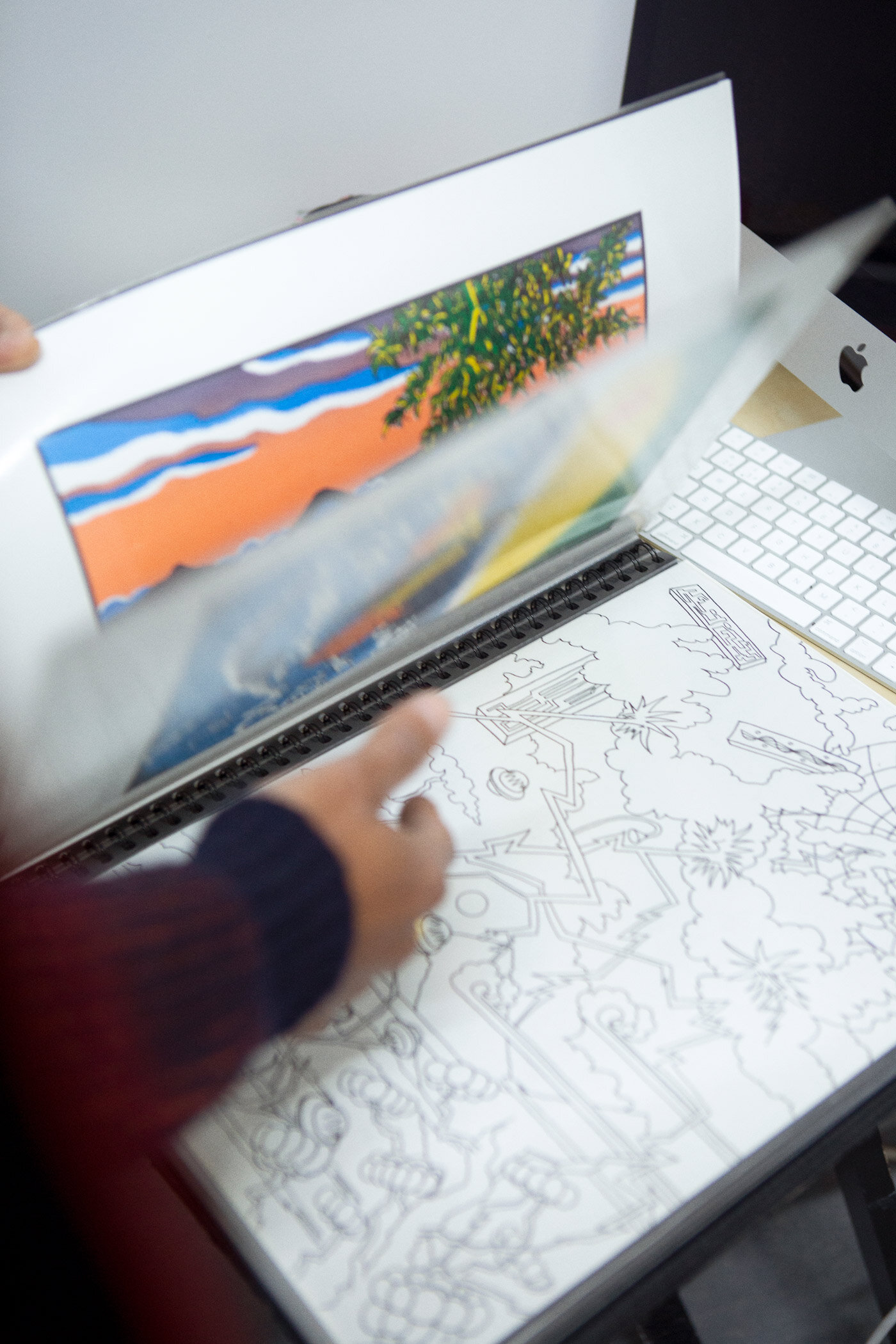Illustrator Gaurab Thakali reimagines scenic nostalgia inspired by music and travel
Ingenuity meets composure at the hands of Nepalese-born illustrator and artist Gaurab Thakali. Renowned for his vivid imagery drawn from imagination and experience, he looks to music and travel to provide an uninterrupted stream of visual inspiration.
His distinct body of work includes a portfolio of illustration, digital drawing, painting and screenprinting, each matched with equal animated energy.
Based in southeast London, the multi-disciplinary creative shares a studio in a converted warehouse in Woolwich. It’s interesting to see how simplistic his space is kept in stark contrast to the colourful, expressive mark-making he’s known for. For Thakali, it’s evident his ideas are stored privately in his mind, like a huge burning archive of collected moments and daydreams.
Firmly cementing his place in the illustration world, the artist has become renowned for his shining depictions of packed-out music venues and intimate bars. They feature a host of recognisable faces predominently from the world of jazz, counting the likes of American harpist Dorothy Ashby and 60s saxophonist Pharoah Sanders. Thakali’s impressive passion and musical knowledge runs steadily throughout his work, effortlessly transporting the viewer back to lively nights at historic clubs including New York’s Cafe Bohemia and Five Spot Cafe.
The illustrator explains how he prefers to listen to a wide range of genres in addition to jazz, including hip-hop, blues and funk whilst painting or sketching. When creating imagery relating to a specific musician or venue he reveals the importance of having music on that “reflects their playing style and personality” and that this heavily influences his ideas when drawing.
This deep-rooted ability to visually capture the emotive power of live music has seen Thakali continue to land commissions for numerous musicians and recording companies eager to collaborate, including British trumpet player Mark Kavuma and Giles Peterson’s independent label Brownswood Recordings. He details how being able to work with like-minded people is “one of the most enjoyable parts” of his practice,” adding, “just being able to share ideas and execute them is a very fun process.”
“I feel lucky enough as a lot of commissions I work on requires me to work in my own way, there has never been a project where I've had to compromise the way I create image. In fact I would say that most commissions probably help me develop my aesthetics more than anything.”
The artist describes how he’s always had an strong enthusiasm for drawing since childhood, allowing his skills to develop as his interests in music and skateboarding subcultures did – shaping his graphic aesthetic. This eventually led him to pursue studies in illustration at Camberwell College of Arts in London, where he was able to hone his signature blocky shapes and figures.
“It made sense for me to pursue it because I just enjoyed drawing, and developing my work and exploring and communicating ideas. I never really thought of it as a career but everything sort of fell in place when I left university in 2014.”
Since leaving university Thakali has rapidly gained recognition as an exciting talent to watch, attracting the attention of leading clients across publishing, fashion and music. His captivating illustrative style has seen him receive commissions from The New York Times, Converse and the Barbican Centre.
The artist reveals how each brief helps him to “learn, adapt and communicate different stories visually,” detailing how his drawings have become “more refined” as a result. He describes his process and how he reaches each final outcome.
“A drawing for me typically starts with research on subject. Sketching roughly on paper working out compositions, layout, light, shadows and figures. Once I get to the point where I’m content, I move on to developing it into a proper final sketch onto paper, canvas or straight to computer depending on how the image will be executed by paint, screenprint or Photoshop.”
Travel also plays a huge part in Thakali’s work, his visits to scenic locations including Nepal and Southern France becoming translated into elegant screenprints. His rarely-seen sketchbooks offer an insightful perspective to his personal journeys, filled with simple ink, pen and pencil illustrations of landscapes and viewpoints. These are often drawn quickly at the location, whilst on the move or after briefly visiting the area and referring to a photograph.
His screenprint Storm at Notre Dame de la Rouviere is based on a previous trip to the village of the same name, set in the rolling hills of rural Southern France. Having spent significant periods of time there over the last few years, Thakali usually stays at a friend’s converted property transformed from a former silk mill. He describes the balmy Summer evenings spent dining outdoors as an pivotal example of his ability to document a place and its sentiment.
“There was a close group of friends we had dinner with every night. When we were there just on any evening, someone would be making food for around 30-40 people at one time. It was alot of fun to be there.”
“While we were there there were a few thunderstorms with lightning and wind that would break out suddenly from 30 degree heat. Just being there and experiencing that I thought it would be quite nice to record that side of the place as well.”
It’s interesting to hear how these moments manifest in the illustrator’s mind, translating themselves from conceptual memories to reality. His screenprints Hills and Pokhara are both a direct result of sketches quickly made during a visit to his native country of Nepal. For these pieces the artist printed directly onto handmade Nepalese Lokta paper, created using the bark of Lokta bushes indigenous to the Himalayan forests.
Thakali talks about how he documented this particular location, usually carrying sketchbooks and sheets of paper with him for the duration of the trip.
“I was trying to draw as much as I could whilst I was there and when I came back I knew I had to make some of these drawings into prints.”
“We were staying at the basecamp for the mountain Annapurna and usually woke up early so the sun was already out and you could see the mountains in the distance. We were staying by one of the foothills and whilst we were sitting waiting to leave for our daily trek I would quickly draw the view.”
Its through this incredible sense of swift curiosity and eye for detail that Thakali is able to evoke a feeling and connect the viewer to a place they may not have ever visited in person. It’s incredible to briefly gain access to his unparalleled perspective of the world through the tangible products of his mind.
As the illustrator continues to go from strength to strength with each artwork he produces, it seems an effortless feat for him to draw something excellet each time pencil touches paper. The unpredictability of 2020 has left Thakali unshaken as usual, his calmly confident demeanor securing a career-defining cover for The New York Times supplement At Home.
He sees this year as, “a time of reflection on what I’ve done before and how i want to progress in the future. There’s defintely been less distractions, making it easier for me to consider what the next steps are for me as an artist. For example I’ve been thinking about doing more large-scale paintings and animation.”
“This period has made me go back into painting more and made me realise that this is something that I've missed, I have already started quite a few paintings so that will be a prominent part of my practice in the future.
Diligence and imagination remain the key ingredients to Thakali’s success as a practicing illustrator. His quiet confidence and consistent work ethic have remained prevalent throughout his career as he reinforces his modest future hopes to “keep working hard and hopefully have a few exhibitions planned down the line.”
See Gaurab Thakali’s work here.

